|
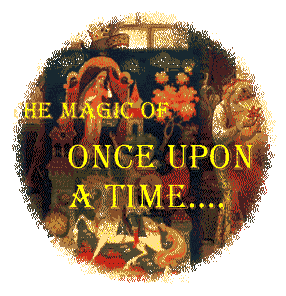
Narrative Logo - Click for Main Menu
X. The Psychology of
Folk: The Horse at the Well?
Jung and
Symbolic Consciousness
Jack and the Beanstalk
material from Jack and the Giant Killer page.

Caption: Jack has killed the Giant from early
children's book illustration
The Unconscious in Fairytales, Myths, and Legends: Are
fairytales actually shared unconscious fantasies? Some personality psychologists think so.
The themes in these stories
represent universal concerns that people find difficult to face alone. Sharing these
stories in groups is therefore reassuring. Swiss psychologist Carl Gustav Jung has provided the
most
extensive analysis of the relationships between myth and personality. One prominent theme
in his work is that we identify with the hero in the great myths. As the hero overcomes
all odds,
defeating even Death itself, we are inspired to pursue our own life quests.
At the center of the work of Freud, Jung, Adler, and others, is the
investigation into personality and how it is formed.
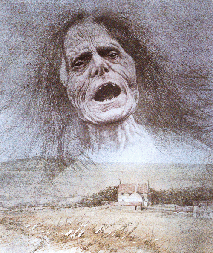
Caption: The Irish Banshee
ghost above the moors
The banshee in Irish Gælic, is called
'bean sidhe', which means 'supernatural woman'. She is envisioned with a sunken nose,
scraggy hair and huge hollow eye sockets. Her eyes are fiery red from continuous weeping.
She wears a tattered white sheet flapping around her. She wails outside the door of
someone who is about to die, but only for old families. All the best clans have their own
private banshee. They are very closely related to the bean-nighe and
cointeach.
This variation on the Banshee could be
found in the legends of Ireland, Scotland and Brittany. The name 'Bean-Nighe' means washer
woman. She was called this as she was usually seen washing bloody garments at the water's
edge. her feet were webbed like those of a duck or goose. If a traveler saw her before she
spied him, he would survive, however, if she spied him first, he would die. In the
Scottish Highlands, it was thought that only those about to die could see her.
There are different forms of hags. The hag from European folklore is
supernaturally ugly, associated with the devil and depicted sometimes as a witch. Hags are
known to use a human as a mount and will "ride" them in their sleep, hence the
term 'hag-ridden'. During sleep, a hag will climb onto a man's stomach or chest and will
"ride" him. This will cause the man great discomfort and nightmares, and even,
if the hag continues to ride the man, death. In Celtic mythology a hag is an ancient
spirit, usually seen carrying rocks in her apron which, when dropped, can cause mountains
to form.
It is said that if two hags are heard arguing, you should retreat indoors, for it
may begin to rain boulders and trees.
There is also and Irish hag that helps out in the household with the spinning.
The Yuki Onna, or Snow Woman, is Japanese
female demon. She inhabits snow storms and causes
travelers to become lost. Eventually the travelers become exhausted and freeze to death.
from Gareth Long's Enclyclopedia
of Monsters. [no longer available]
see also Monstropedia
Online.
"A plaque found in northern Syria
(Arslan Tash = ancient Hadattu) has an image of a sphynx-cherub creature and a she-wolf on
one side. The she-wolf appears to be devouring a child. On the reverse is a figure of a
god of some variety, marching and holding an axe. There is a primary magical inscription,
as well as writing on the sphynx, the she-wolf and the deity. The language is a dialect of
Phonecian/Canaanite. It may be worth noting the importance given to the role of the female
deities (wives of Hawron and Ba'l) in controlling the demoness(es). Rosenthal assumes that
the she-wolf and the sphynx/cherub represent different demonesses. I am inclined to think
that they both represent
the same 'lili'.
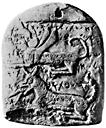
Caption: Plaque of ancient Lilith
This plaque was originally dated to 6-7th c. BCE. However, some recent scholarship has
suggested that the plaque may be a forgery dating from the 1930's CE. If it is authentic,
there is still some issue as to whether the 'Lili' referred to is the same as the Lilitu
of the Mesopotamians. If it is a forgery, of course, there can be little doubt that it is
Lilith, but it must be reassessed as a special case among modern amulets."
from the Lilith Page, University of Pennsylvania
if we have interest in this, a little bit from the
Kabbala
on Lilith.
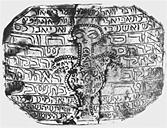
Caption: Lilith of the Kabbala
and, another famous female legend that
sheds light on the Freud/Jung theories - that of the Amazon Women.
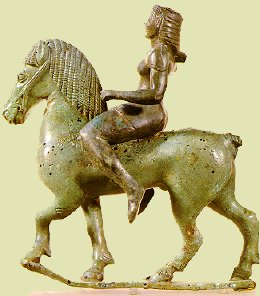
Caption: The Amazon Warrior
This investigation into the image of women leads us to the
question of personality. Apparently it was not the Female personality that we being
formed by these tales, as they would, for women, countermand the theories of both
Freud and Jung. But let us look again at personality.
There is still a lively interest in the psychological aspect of
folktales from the Jungian perspective. There are seminars available continually in
California, for example. The description of one such seminar, by Dr. Young, goes like
this:
"Favorite stories from childhood
can have subtle influences on adult identity. This course shows how to analyze fairytales
for metaphors rich in psychological insights. The instruction explores how symbolism in
stories can reveal elements of the inner life. Training includes detecting unconscious
themes in favorite
stories - and using archetypal perspectives in discussions of presenting issues.
Presentations cover the significance of a sense of personal story - and the influence of
family stories as
shapers of unique worldviews. Presented at an introductory level for doctoral
psychologists, this seminar is useful for counselors, teachers, writers, clergy, and
those interested in archetypal perspectives."
In order to understand the Jungian
interpretation of Folktales, we need, as with Freud, to understand a little bit about his
theories of the psyche.
By Archetype: Persona, Ego, Shadow, Anima/Animus, Self.
these are all influenced by the
various aspects of the mind.
aspects of the mind
The Unconscious: According to Jung contents
of the unconscious mind were once conscious and have become repressed; are subliminal
perceptions; memories too unimportant to be remembered (Freud's pre-conscious); contents
arising independently from the collective unconscious, a stratum common to all human
beings that provides the creative and healing forces which are so important to meaningful
human life. For Jung, the unconscious fulfills a positive role, performing a therapeutic
function by showing the conscious mind what needs to be done to get rid of unease and
unhappiness and to achieve fuller satisfaction in life. Freud saw the unconscious as a bin
for receiving the conscious mind's rejected experiences and memories.
Consciousness: The waking condition; knowing what is
happening around oneself; the state of being conscious.
Personal Unconscious: Those things that have been repressed,
rejected from consciousness, something that has built up during the individual's lifetime.
Campbell describes it this way; firstly, they are contents that have lost their intensity
and were forgotten or because consciousness was withdrawn from them (repression).
Secondly, contents which never had sufficient intensity to reach consciousness but have
somehow entered the psyche. (From 'The Portable Jung')
Collective Unconscious: That part of the psyche which retains
and transmits the common psychological inheritance of mankind. The collective unconscious
is not individual but common to all mankind, and even perhaps to all animals. It is the
instinctive aspect of the psyche, just as in the turtle knowing exactly where the water is
at birth and knowing to go straight for it. The collective unconscious consists of
mythological motifs or primordial (pre-dating mankind) images, for which reason the myths
of all nations are its exponents. The whole of mythology could be taken as a sort of
projection of the collective unconscious -Joseph Campbell, 'The Portable Jung.'
Symbol: The best possible expression for something
essentially unknown. Symbolic or nonlinear thinking is holistic, right-brain oriented; it
is complementary to logical, linear, left-brain thinking.
Psyche: Greek word for 'soul'. The 'totality' of the
conscious and unconscious life. The mind considered as an organic system reaching all
parts of the body and serving to adjust the total organism to the needs or demands of the
environment.
Archetype: Self-portraits of the instincts. The instinctive
forces and instinctive strategies or ways of behaving. 'Archetypal images' are the symbols
through which these instinctive things show themselves in dreams. Archetypal images
include symbols that occur in mythology, fairytales and religions. They are older than
mankind and belong to the collective unconscious. Archetypal images are symbols that
represent contents within the psyche. that were never conscious experiences. They are the
'universal' symbols that are available to us all even though we have no knowledge of them
in our waking lives.
Archetypes are common psychic structures that parallel the common human physical
structure.
Personality Types:
Attitudinal Types
Extrovert - A person who is active and expressive; a person whose interests is more in
his/her environment and in other people than in him/herself. this type welcomes external
situations, in fact thrives upon them.
Introvert - A person who directs one's interest or attention upon oneself. this type
person will back away from external situations.
Functional Types
Thinking Types - Where the use of reason or 'thinking it through', is your superior
function.
Intuitive Types - Where intuition is your superior function, you know things in a direct
immediate way, without the need for reasoning.
Feeling Types - This includes moral feelings as well as other kinds of sentiment (love and
tenderness). In this case, 'feeling' must be clearly distinguishable from sensation, which
is a physical thing.
Sensational Types - Your favorite way to relating to reality is physical
sensation,
physical sensory feelings.
Persona: Greek for 'mask'. Jung uses the word for self-image
with which we face the world. The persona is based on your superior function in life (the
function that will best serve one in meeting the world's demands). When your persona is
forced upon you , as when your parents push you into academic achievement, forcing you to
build a thinking-based persona, whereas your natural (God-given) superior function was the
feeling function or intuitive function, etc. There is a misfit between your persona and
your real superior function, and you will soon know about it (a function of dream).
According to Jung, the unconscious expresses itself in
folktale and myth; and all myths revolve around the theme of individuation.
Myths are, so
to speak, signposts showing us the way to fuller self-realization. Whereas dreams are a
process that can help you achieve personal balance, so too is myth, both resulting from
the same zone in the brain. The four stages of individuation are the following.
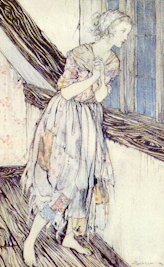
Cinderella (ragged) at the window
The Shadow
Parts of the psyche that have not been brought to consciousness, the 'dark' side of your
psyche. The negative side of your psyche, insofar as it is the opposite of whatever you
have hitherto regarded as making a positive contribution to your well being.
Cinderella is a shadow figure. She is ignored and
neglected by her elderly sisters. Cinderella
is shut up while her sisters (other parts of the psyche) go out into the world. This
represents the contrast between the conscious ego (which relates to the outside world) and
those parts of the unconscious that have not been allowed any part in one's conscious
activity.
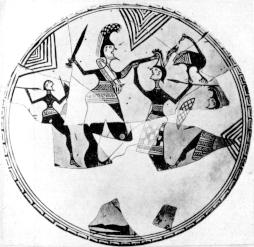
Caption: Greek Battle Scene - Bronze Age
Anima And Animus
These are what Jung called the 'soul image' which is one of the archetypal images. For a man this is the 'anima'; for a woman it is the 'animus'.
The anima is the feminine aspects of a male psyche; for instance, being gentle, tender,
patient, getting close to nature.
The animus is the masculine aspect of the female psyche; being aggressive, assertive,
controlling, taking charge, the fighting spirit.
These 'soul image' characteristics are in opposition to those possessed by your persona. If
your persona is an intellectual one, your soul-image will be characterized by sentiment
and emotion; if you are the intuitive type, your soul-image will be earthly and sensual.
The object is to recognize (through dream) these 'soul images' and to incorporate them into
your persona.
'Mana' Personalities
The mana personalities are symbols of the power and wisdom that lie the deep parts of your
psyche. This is where the man meets the 'Wise Old Man' in dream and where the woman meets
the 'Great Mother'. Jung calls them mana personalities because in primitive communities
anyone having extraordinary powers or wisdom was said to be filled with mana (a Melanesian
word meaning 'holiness' or 'the divine'.) Jung warns not to be possessed by the mana
personalities or it could result in megalomania (delusions of grandeur, wealth, power,
etc.). For example, a woman who allows her conscious mind to be invaded and subdued by the
Great Mother will begin to believe herself able and destined to protect and nurture the
whole world. A man in this instance would believe he is some sort of superman or great
guru, filled with heroic power or superior insight into the meaning of things.
The mana personalities can be projected onto someone else. For example, instead of making
contact with this inner store of power and wisdom, one may choose to disown it and see it
as the property of someone else, some national leader or folk hero (as in John Lennon's
murder).
The proper thing to do with the mana personality is to integrate it into your
consciousness. This means that consciousness and unconsciousness is no longer seen as
opposites, but as two cooperating and complimentary parts of one and the same psyche.
The 'SELF'
The 'SELF' is the total, fully integrated psyche, in which all opposing or conflicting
elements are united and coordinated. This is to be distinguished from the ego which is the
conscious mind, a part of the whole of the psyche.
Most people never reach this stage in life.
Jesus and the Buddha are two who would fit this category. The 'Self' is the ultimate in
your experience of the psyche. Experiencing the 'Self' is to know all there is to know
about yourself, your life, your destiny, your meaning, and the meaning of life in general.
The process of achieving these goals is a primary purpose of dream. Whereas Freud saw
dream as a preserver of sleep, Jung saw dream as an avenue of 'self' discovery, getting
to know your whole self, thus healing whatever may be out of balance in one's life. The
'Self' is the final stage of the individuation process.
A little stab at Jungian Interpretation: Earthquake
Basic meaning: things are falling apart, some aspect in your life is on unsound footing.
(1) What is quaking, or in danger of falling apart, may be you or your life. Is your
marriage breaking up, or your business? Or do you need to look below the surface of
yourself, into the depths of your unconscious, to see what is threatening to explode?
Violence is usually caused by frustration. What part of you have you buried in the
unconscious and robbed of its right to a place in your life?
(2) Since earth may represent mother, an earthquake could mean the breaking-up of your
mother-attachment; or possibly the death of your mother (not a prediction of her death).
(3) Since earth may represent the unconscious, an earthquake may represent your fear of
being swallowed up by your mother or mother-attachment, or some other unconscious complex.
Or, Mother and Father
Mother
Basic meaning: Older, wiser, more experienced part of feminine self aspect; the
unconscious; intuition; natural and instinctive life; your relationship with your mother.
(1) A dream about your mother may be telling you something about your relationship with
your mother. Mother-attachment may be
so strong that the development of your own individuality has been prevented. Inner
independence of mother is the first great step
towards realizing your true self.
(2) In a man's dream, mother may symbolize the feminine side of his psyche.
(3) Mother may symbolize the unconscious; intuitive self; natural instinctive life; the
source of nourishment and growth for the psyche.
Father
Basic meaning: Wiser, more mature masculine aspect of self; straightforward representation
of your father.
(1) For men, father may be a conscience figure. If this is the case, bear in mind that
your father's prohibitions and commands will probably represent either conventional moral
options which may have no relevance to your true nature or 'destiny', or irrational fears
and feelings of guilt that began to take shape in you in early childhood.
(2) For a woman, father may figure in a dream as one who generates affection.
(3) The presence of your father may be a straightforward representation of him, or of the
way you see/remember him (which may owe more to your subjective distortions than to what
your father actually is or was). In any case, the reason for your father appearing in the
dream will be shown by the part he plays in the dream story.
(4) If your father features in the dream as a protector, it may be that you need to 'grow
up' and rely on your own resources. After all, life can hurt you only if you let it, only
if you identify with your emotional self instead of with that deep layer of yourself that
is immune to life's pains and perils.
(5) Father may be an animus figure (see Glossary of Jungian Terminology), representing a
woman's (unconscious) masculine qualities. In this case, the dream may be suggesting that
she should cultivate this countrasexual side of her nature.
(6) Frequent appearances by either parent, or both, in dreams may be a sign that you have
not thrown off an infantile over-dependence on them. Jung cites a young man's dream in
which the man's father appeared as a drunken driver, smashing his car into a wall. This is
the exact opposite of the real father, who was a most respectable person, rightly - but
too too much - respected by the son. What the unconscious was doing through the dream was
dethroning the father in order to enable the son to
achieve a proper sense of himself as a person in his own right, with his own unique
destiny and values.
Personality
Personality places its emphasis on understanding
who we are, why we are the way we are, and
usually is concerned with the possibility of
change anywhere along the spectrum of
psychopathology to self fulfillment.
The field of personality may be divided ....
into four categories:
1.psychodynamic
2.phenomenological
3.dispositional
4.behavioural
Or maybe seven...
1.psychodynamic
2.phenomenological
3.trait/factor
4.biological
5.behavioral
6.cognitive
7.social
Or maybe just two...
1.phenomenological
2.'empirical'
Even if you were very ambitious and divided
them into 12, you probably wouldn't find a
theorist who belongs exclusively to any one
(especially outside of working hours). At best
they might be considered central theoretical
dispositions.
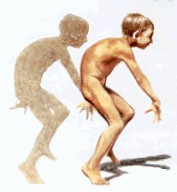
Caption: Doppelganger, Child and
Shadow
"Meaning 'double walker' a
doppelganger is a shadow-self that accompanies every human. Only the owner of a
doppelganger can see it, otherwise it is invisible to human eyes. Dogs and cats have been
known to see doppelgangers. Providing sympathetic company, a doppelganger almost always
stands behind a person, and they cast no reflection in a mirror. They are prepared to
listen and give advice to humans, either implanting ideas in their heads, or a sort of
osmosis. It is said to be bad luck if it is seen, and rarely a doppelganger will make
itself visible to friends or family, often causing great confusion. Doppelgangers can be
mischievous and malicious."
from Gareth Long's Enclyclopedia
of Monsters.
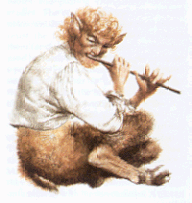
Caption: The god Pan with his pipes
"The Fauns, which are
associated with Satyrs, but are known to be
more gentle, are mischievous creatures with the legs, ears and tail
of a deer and the face and body of a handsome young man. They
follow the god Faunus and can cause nightmares. At times, they
can also be quite cheerful."
from Gareth Long's Enclyclopedia
of Monsters.
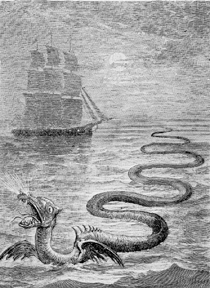
Caption: Sea monster and ship
Continue
with Lecture X.
|










